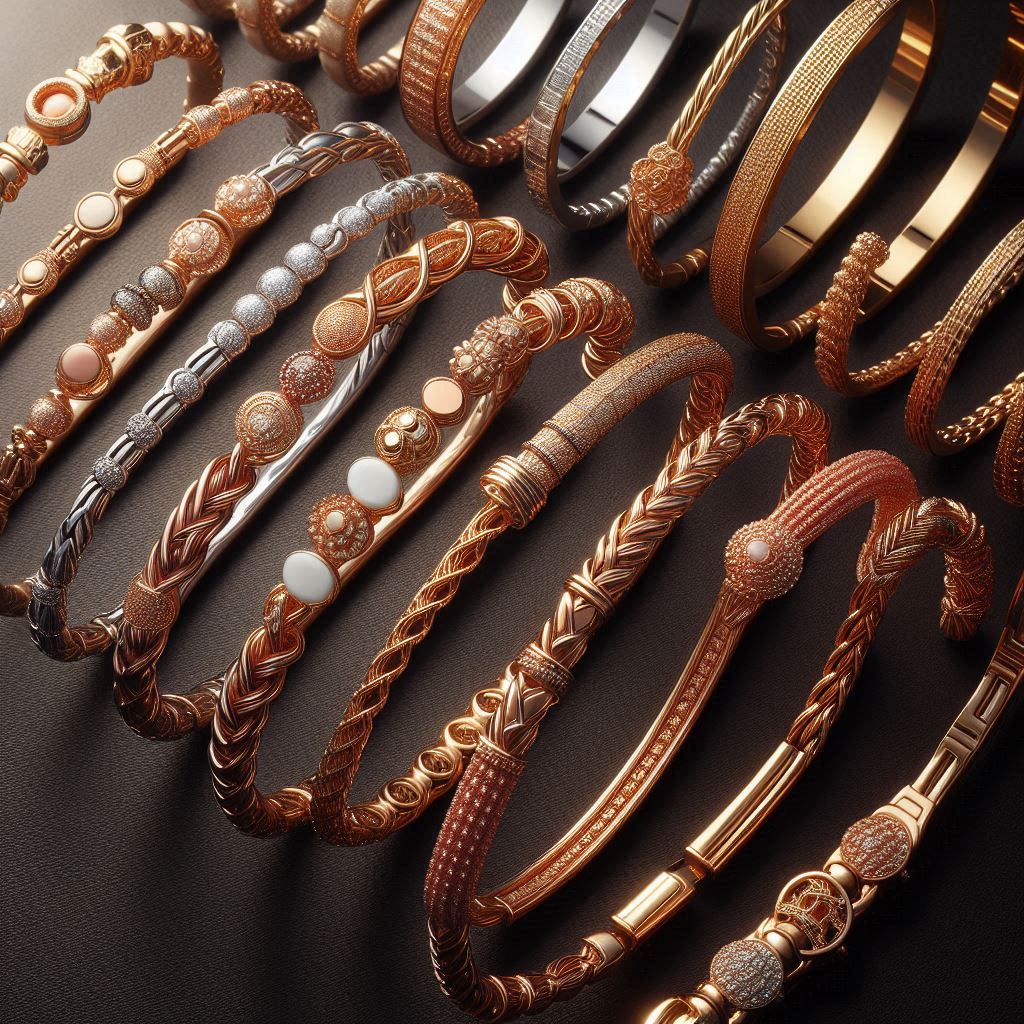Gold in Jewelry
Gold in Jewelry: Understanding Its Appeal and Value
Gold has been a symbol of wealth, status, and beauty for thousands of years, making it one of the most popular materials used in jewelry. From ancient civilizations to modern-day designs, gold’s allure remains unmatched. But not all gold jewelry is the same. This article will explore the various types of gold used in jewelry, what they mean for value and appearance, and tips for making informed purchasing decisions.
1. Why Gold for Jewelry?
Gold’s appeal lies in its unique properties:
- Malleability: Gold is incredibly soft and can be shaped into intricate designs without breaking.
- Durability: While soft, gold is resistant to tarnish, corrosion, and rust, making it a long-lasting material for jewelry.
- Beauty: Its rich, warm color is universally flattering, making it a timeless choice for many.
These qualities make gold the ideal metal for crafting everything from delicate rings to elaborate necklaces.
2. Types of Gold Used in Jewelry
When buying gold jewelry, you’ll come across several different terms that describe the type and quality of the gold. Here’s a breakdown of the most common types:
a. Pure Gold (24K)
- Purity: 24 karat (24K) gold is 99.9% pure gold.
- Characteristics: It is bright yellow in color and very soft. While it is the purest form of gold, its softness makes it less practical for everyday jewelry as it can bend or scratch easily.
- Use in Jewelry: 24K gold is commonly used in high-end jewelry or in cultural pieces, especially in regions like India and China where pure gold is highly valued.
b. 18K Gold
- Purity: 18 karat (18K) gold contains 75% pure gold, with 25% made up of other metals like copper or silver.
- Characteristics: It is more durable than 24K gold while still retaining a rich yellow color. It strikes a balance between purity and strength, making it a popular choice for high-quality jewelry.
- Use in Jewelry: Often used in fine jewelry, engagement rings, and luxury watches.
c. 14K Gold
- Purity: 14 karat (14K) gold contains 58.3% pure gold and 41.7% other metals.
- Characteristics: More durable and affordable than 18K gold, it’s a practical option for everyday jewelry like bracelets, rings, and necklaces.
- Use in Jewelry: Commonly found in a wide range of jewelry styles due to its strength and affordability.
d. Gold-Plated Jewelry
- Purity: Gold-plated jewelry consists of a base metal (such as brass or copper) coated with a thin layer of gold.
- Characteristics: It offers the look of gold at a fraction of the cost. However, the gold layer can wear off over time, exposing the base metal underneath.
- Use in Jewelry: Popular in fashion jewelry due to its affordability, though it lacks the longevity of solid gold.
e. Gold-Filled Jewelry
- Purity: Gold-filled jewelry has a thicker layer of gold (usually 14K) bonded to a base metal. It contains a higher percentage of gold than gold-plated pieces.
- Characteristics: It is more durable than gold-plated jewelry, making it a longer-lasting option that closely resembles solid gold.
- Use in Jewelry: A budget-friendly alternative to solid gold, often used in mid-range jewelry.
3. Colors of Gold
Gold’s color can also vary depending on the metals used in the alloy. Here are the most popular options:
- Yellow Gold: Yellow gold is the traditional and most common form of gold, and it is created by mixing pure gold with copper and zinc. It’s the closest to the natural color of pure gold.
- White Gold: Made by alloying gold with metals like palladium or nickel and often plated with rhodium for a shiny, silvery finish. White gold is popular for modern engagement rings and wedding bands.
- Rose Gold: Alloyed with copper to create a warm, pinkish hue, rose gold has gained popularity for its unique and romantic appeal. It’s softer in appearance but durable due to the copper content.
4. What to Consider When Buying Gold Jewelry
When purchasing gold jewelry, it’s important to consider several factors to ensure you’re making a wise investment:
- Karat Weight: Higher karat gold is more valuable but also softer, so consider how often you’ll wear the piece when deciding on karat weight.
- Hallmarks: Look for hallmarks or stamps on the jewelry that indicate the gold’s karat and authenticity.
- Allergies: Be aware that certain alloys used in white or lower-karat gold can cause allergic reactions, especially nickel.
- Budget: Determine your budget ahead of time. If you want the appearance of gold without the cost, consider gold-filled or gold-plated options, though they won’t last as long as solid gold.
The Gold Buying Facts . . .
Gold in jewelry comes in many forms, each offering a unique blend of beauty, durability, and value. Whether you’re drawn to the luxurious allure of 24K gold, the practicality of 14K gold, or the trendy look of rose gold, understanding the different types of gold can help you make informed decisions when buying jewelry. By knowing what to look for, you can find a piece that not only fits your style but also stands the test of time.
For more insights on gold investment and how it can benefit you, visit goldbuyingfacts.com, your trusted source for expert advice and up-to-date information.


